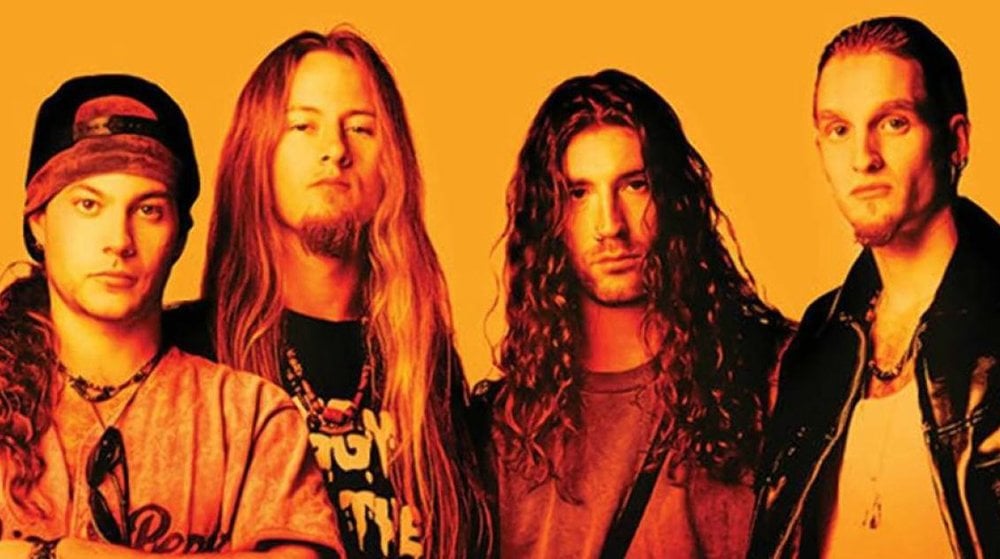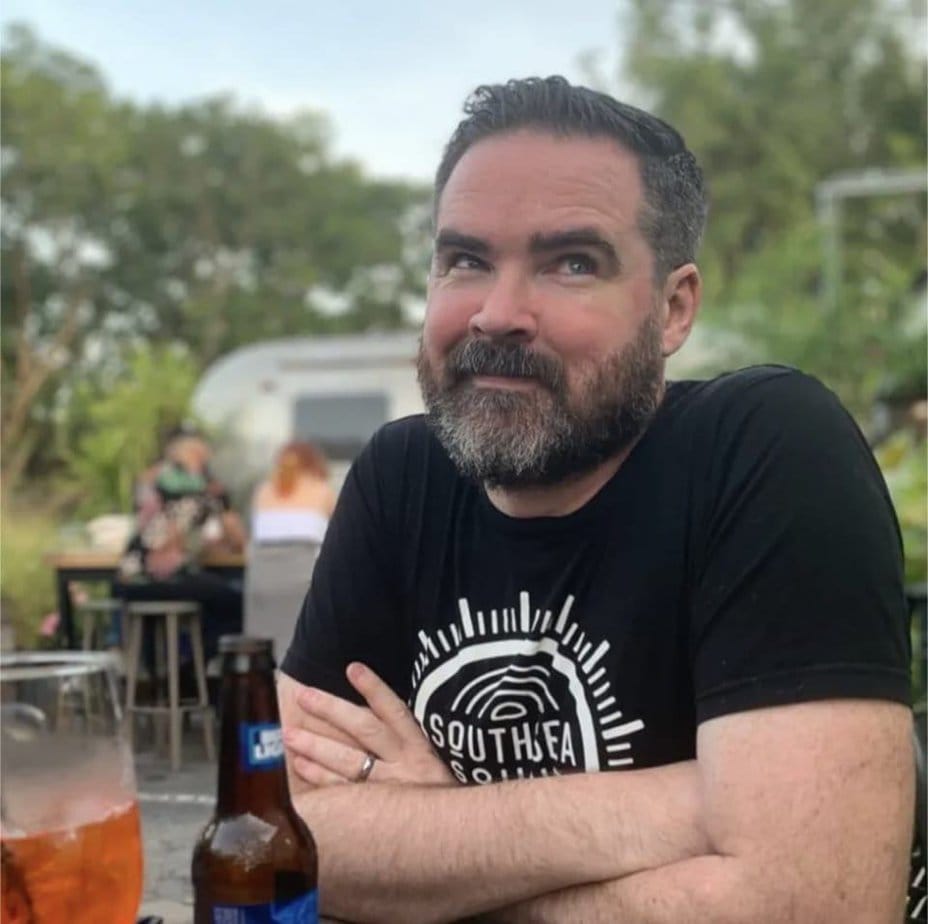Want to mirror Jerry’s Cantrell’s incredible guitar tone from such classics as Them Bones and Dam The River? Or just want to nerd out on one of the all-time greatest guitar tones?
We’ve got you covered. Jerry Cantrell’s guitar tone on Alice in Chain’s breakthrough album Dirt was thick and chunky, yet had a ton of clarity. When performing live, he somehow gets a whole band’s worth of tone out of one guitar. But how did he achieve those tones on the record? Let’s take a look.
You may also like
- Best Cheap 7-String Guitars
- What Is Agathis Wood and Why Is It So Hated?
- 10 Best Delay Pedals – With Buyer’s Guide
Contents
Recording Alice in Chains’ Dirt
Released in 1992, Dirt is Alice in Chains second record, a followup to 1990’s Facelift. The album came at the height of the first wave of grunge and launched a career that would span 30 years, several albums, and more than it’s fair share of tragedy.
Dirt was recorded by Dave Jerden from April to July 1992 in three studios: Eldorado Recording Studio in Burbank, London Bridge Studio in Seattle, and One on One Studios in Los Angeles.
Jerden had previously worked with the band on both their first album Facelift and the EP Sap. Jerden’s discography as a producer, engineer, and mixer is filled with huge records from that time. When he teamed up with the band to record Facelift, he was just coming off recording Ritual de lo Habitual by Jane’s Addiction, and riding high on the success of Red Hot Chili Pepper’s Mother’s Milk. Jerden’s past credits span the Rolling Stones, Frank Zappa, and David Byrne. At the time of Dirt, he had just finished recording Spinal Tap’s comeback album Break Like the Wind.
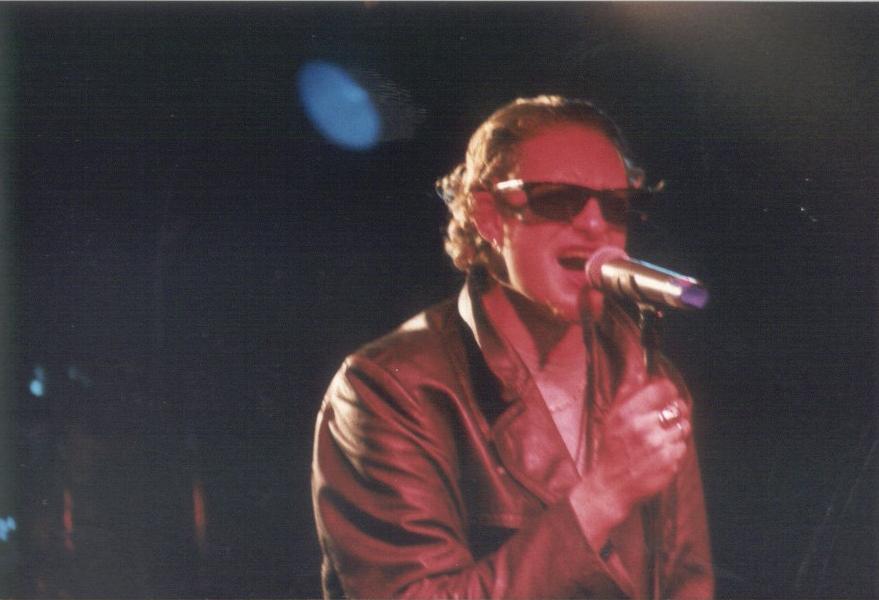
The album was recorded to the backdrop of the LA riots, which broke out the day the band started recording. In fact, Cantrell was buying beer in a store when a man came in and started looting. On his way back to the studio, Cantrell got stuck in traffic and saw people being pulled out of their cars and beaten. The band ditched LA for the Joshua Tree desert with Slayer vocalist Tom Araya for a couple days, returning to resume recording once the riots had passed.
LA tore itself apart protesting police brutality. We had to try to get out of the town without getting hurt… and just kinda tripped out in the desert until things calmed down. And then, we moved back into the studio and started recording. That’s how Dirt started.
Jerry Cantrell interview with Vice
While singer Layne Staley had recently checked out of rehab, by the recording of the album he was back to using heroin. In addition, drummer Sean Kinney and bassist Mike Starr were struggling with alcohol addiction.
Guitars
1985 G&L Rampage – the “Blue Dress” Guitar
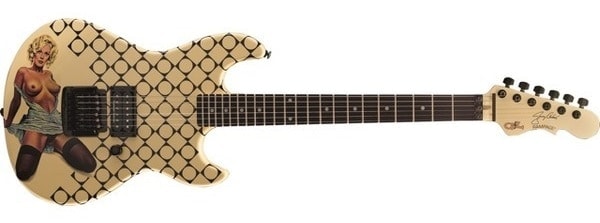
Cantrell bought his famous G&L Rampage in 1984, shortly after moving to Dallas to get involved in the music scene there. At the time, he was “working” at a music store named Arnold & Morgan Music – though his version of working was to “smoke pot and play guitars all day long.”
Cantrell told Guitar World:
“From the very first time I picked it up and played it, it just felt right to me,” he says. “It was designed to blend the playability and high-end sound of a Strat with the darkness and full-bodied sound of a Les Paul.”
Unlike most Rampages, the blue dress is all maple – hard rock maple neck and maple body. Cantrell replaced the original Schaller humbucker pickup with a Seymour Duncan JB, installed a Floyd Rose nut in place of the Leo Fender designed original, and modified the original Kahler tremelo system by countersinking the trem to keep the low E from dropping out.
(There were) a few tweaks I came up with simply because some elements of the original design were weak. The locking mechanism at the nut was basically just a couple of plates that clamped down, but they would snap off every time you put pressure on them. So I replaced the nut with a Floyd Rose, which is a lot sturdier and more stable.
The guitar came stock with a Kahler tremolo system, and the low E string would fall out of the saddle when you pushed the tremolo bar all the way down. The solution was to countersink the tremolo, which put more tension on the strings and kept the E string sitting securely in the saddle.
Amps
Bogner Fish Preamp
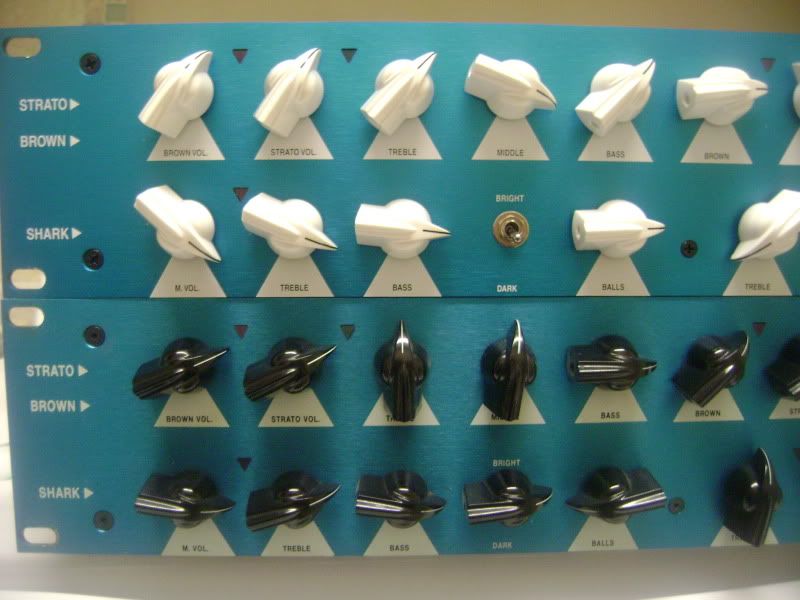
While Cantrell is quoted as saying offhand that he used this on the first two albums, he’s also said he used the Marshall “exclusively” on the first two records, which is of course contradicted by all the evidence that he used a combination of three amps on Dirt.
As for the Fish, it’s a rack-mounted preamp (not a preamp pedal) that was modified for Cantrell (known as the Cantrell Mod) to replace the “Shark” switch, whereby you can switch the signal from bright to dark, with a dial so users can set the amount of bright/dark they want in their signal.
Jerden told Gearslutz that for Dirt he ran it into a VHT power amp and then into a Marshall cab with Vox Bulldog speakers.
Bogner Ecstasy

Reinhold Bogner moved from Germany to the US in 1989 and came to Canrell’s attention when one of Bogner’s modified Marshall JCM800s was used on Facelift (more on that below). In fact, it was Cantrell’s tone on that record that blew up interest in Bogner’s work.
The Ecstasy, released in 1992, was Bogner’s first amp, following on from his two initial rackmount preamps, the Tripe Giant and the Fish.
Cantrell would go on to use multiple Bogner models over the years, including the Shiva which he would run along with a Friedman Marsha.
Rockman Headphone Amp

The Rockman headphone amp was developed by Tom Scholtz of the band Boston, and was meant to allow guitarists to plug in both their guitar and an aux input (eg their stereo), and then play along with records while listening on headphones. The unit allowed the user to add compression, distortion, and echo/chorus.

The units had a very high signal-to-noise ratio (meaning you got a lot of signal from them with little to no hiss or other interference), so they could actually be used for studio applications and were eventually developed into rackmount units.
Marshall JCM800 – Modified by Reinhold Bogner
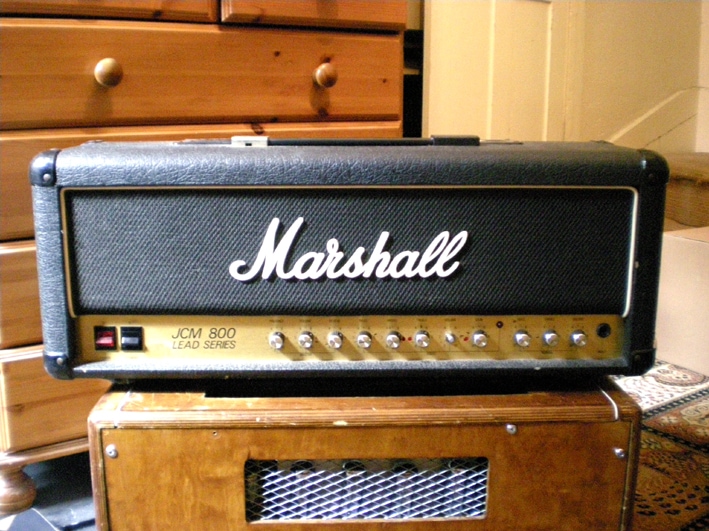
Cantrell’s main amp at the time of recording both Facelift and Dirt was a JCM 800 that had been modified by Reinhold Bogner of Bogner amplification fame. Bogner worked closely with Cantrell on all his amps in this period.
Cantrell says:
“I used a Reinhold Bogner–modified Marshall exclusively on Facelift and Dirt. I love that sound: clear low end with a lot of growl that doesn’t come at the cost of definition.”
However, Cantrell has also said that his tone stack was his Bogners and a Rockman, a claim backed up by Jerden. So while it’s possible the Marshall is on the record somewhere, it’s far from “exclusive”.
Cantrell picked up the modified Marshall after using one on Facelift that was owned by Ronnie Champagne, the engineer on the record. Here’s what Ronnie said about his own.
I was the engineer with Dave Jerden producing on Facelift. I am the owner of “the Snorkler” that we used for most of the guitar and some six string bass tracks on the album Facelift.
It’s a Marshall 50 watt HCM 800 combo 4010 that I had Bogner modify for me. 4-12ax7a tubes and el34’s for power.
Andy Brauer turned me onto a Bogner Modified JCM 800 that Rheinhold had modded, apparently he did a few for Eddie and Steve and Joe.
Well i had the same amp and took it over to Rheinhold and asked him to do exactly the same thing to mine. He refused saying that he was trying to launch his own product. I told him i didn’t care how much it costs and that my clients would send him a ton of business,to which he capitulated – grudgingly. Good move I’d say!
We used a 4×12 with greenbacks in a stairwell all knobs on ten for solos, but we also used it in various settings for a multitude of overdubs…using a Shure SM57 into a Neve 1073 into a LA-2A compressor/limiter to the tape machine.
I also used it on Jane’s Addiction’s “Ritual De Lo Habitual”, Social Distortion, Deconstruction with Dave Navarro and Eric Avery from Jane’s Addiction. and many other records worldwide.
It is THE platinum amp, priceless to me – Jerry offered me big cash for it, but i ain’t no dummy!
Mesa/Boogie Dual Rectifier Prototype
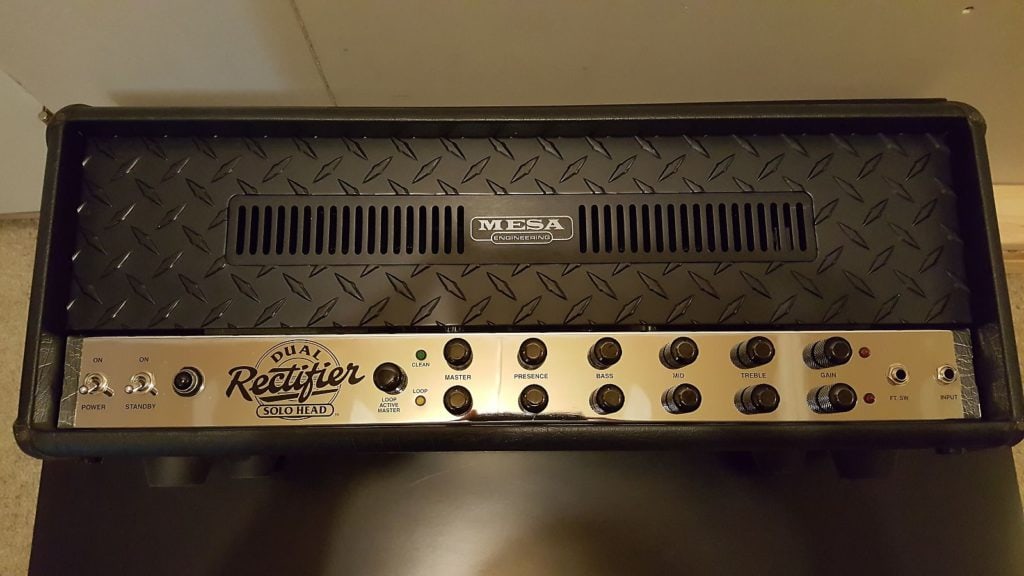
This is another one that Cantrell is quoted as saying was on the record, but Jerden has contradicted. Either way, there really isn’t a whole lot of specific information available about the Mesa that Cantrell may used on Dirt. The Dual Rectifier was released in 1992, so the thought is that Cantrell’s was was probably a “Rev C” prototype.
Effects
Dunlop Jimi Hendrix Cry Baby Wah
While Cantrell now has his own signature wah, at the time of Dirt he was using a Dunlop Cry Baby, said to be the Jimi Hendrix version.
In 2013, he told Premier Guitar:
I started off playing the Jimi Hendrix version of the Dunlop Cry Baby, and a few years ago the guys at Dunlop decided to design one for me. My tone has a little bit more darkness to it, and I’ll play the Cry Baby not even rocking it back and forth in a full sweep. I use half or three-quarter sweeps. So Dunlop took all those elements and put them into that pedal. It has a darker, throatier tone to it that I’m really happy with—not only to have my own pedal and for it to be the one I use the most, but also for a handful of my other friends to use it and really dig it. Nick Raskulinecz—who’s produced a couple of Rush records, too—told me Alex [Lifeson] used one in the studio when they were recording their last record, which made me really proud.
Recording Guitars – Technique
Producer Dave Jerden famously liked to record different amps for different frequencies and then blend them together in the mix to get a gigantic, thick but distinct sound.
In the case of Dirt, Jerden told Gearslutz:
I used the Ecstasy for the “mid” amp and the Rockman for the top however for the bottom I used a Bogner Fish Pre Amp ( Modified by Bogner) with a VHT Amp and a Marshall cab with Vox Bulldog speakers.
I use SM57s to mic. To split the amps I used a Lucas Deceiver . I did not mix the amps but left them separate to the end ( before mixing ) and Jerry “doubled” himself so there was 6 tracks of amps before mixing.
The “trick” in mixing is to make crossover points with Hi pass Lo Pass filters. To this end I mixed on an SSL console that has these filters on every module. For the low amp I set the low pass at only 300hz. The mid amp was 300hz to 4k and the high amp 4k to 8k cuttoff. I cut everything “Flat” however I did EQ the amps in the mix using a mild EQ curve from AMP to Amp.
In a 1993 interview, Cantrell said:
For the guitar tones, I used my Bogners, a Mesa/Boogie Dual Rectifier and a Rockman. Instead of EQing the guitar, I put down guitar tracks of different EQ sounds. I put the low stuff with the Dual Rectifier, the big whomping sh*t, and the real biting stuff that is my sound in the middle [Bogners], and then a real sh*tty, high Rockman on top of it.
I did this on each side, so that even though there’s three tracks on each side, they’re not necessarily used every time. But whatever sound you want, instead of having to twist the knob, it’s already there.
That was due to [producer] Dave Jerden – he’s really smart guy.
Bass Tone

Let’s be real – any good guitar tone needs a bass tone underneath it to fill in the gaps. Then-bassist Mike Star used a Spector NS-2 in this time period and his successor Mike Inez uses a Warwick Streamer, which is very much in the same chunky chalky area.
Jerden said of getting the bass tones:
I had an SVT amp plus A Sans Amp track, and I had an EFX track for bass that had slight chorusing /Flanging PLUS a straight DI track AND a VOX Westminster bass amp with an 18″ speaker! So I had 5 tracks Bass! Pre amps were 1073’s 1176 compressor on each track .
He also spoke of using a Hamer 12-string bass on Rooster:
All of the choruses on “Rooster” are doubled- just the basic notes of the chord changes in the choruses.. It’s not that the whole bass part is doubled. If his part was playing a run in between the changes, he didn’t double that- only the root notes of the chord changes. It gives a great sound.
Finally, he said he added a piccolo bass:
On top of that I have a Dan Electro 6 string piccolo bass. I use that through a Zoom processor set to a Marshall sound. The reason I use a Zoom as opposed to a plugging the bass into a Marshall is that the sound is so huge that it will wash everything else out and kill the guitars. But the Zoom has a really limited bandwidth and it has the distortion.
Dirt Tour Rig
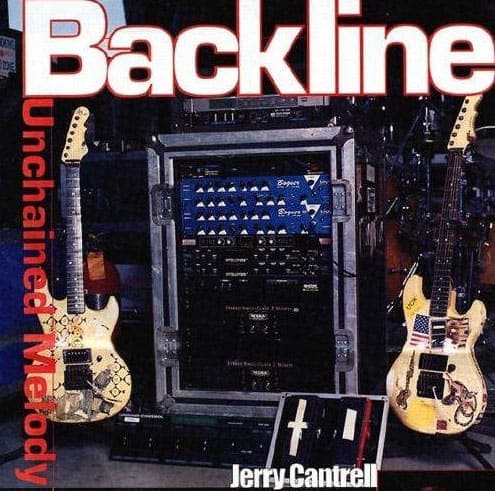
The band toured relentlessly on Dirt, though of course many legs were disrupted by Stayley’s heroin addiction.
As far as what Cantrell was using, here’s the man himself:
I got rid of my VHT power amps because they were a little too dark and muddy-sounding. I mean, they sound great, but the way I have it set with the preamps, I needed a solid-state thing. So I switched to MosValves. It gave me a little more crispness and crunch.
The only thing I used for effects last time was my T.C. Electronic thing, and I sh*t-canned that because it was too complicated to figure out (laughs). I got these two Rocktron multi-effects units, and a Hush system to quiet it out a little. A pretty simple system.
For guitars, Cantrell used his Rampages.
Recreating Jerry Cantrell’s Dirt Tone
Many have tried, few have succeeded. In fact, Ryan Fluff Bruce attempted and after spending a day trying all kinds of amps… used a modeler!
If you decide you want to recreate the tone, probably the best place to start would be his signature G&L Rampage, which surprisingly runs under $1,000. The specs match pretty well to what Cantrell used on the album – 25-1/2″ scale length, maple body and neck, ebony fingerboard, Kahler vibrato and Floyd Rose nut. While it doesn’t come with the Seymour Duncan JB, it does have a Paul Gagon-designed humbucker that is very much in the same ballpark.
As far as amps, you can of course stack the above, but it seems unlikely you’ll have them all to hand! Many have suggested an overdrive like a tubescreamer or an OD808 into a Marshall with the gain dimed will get you into the ballpark, but you’re really going to be struggling to get the low end of Dirt.
These days, Cantrell plays through Friedman amps and has for a long while, so a Marshall into a Friedman BE-OD Overdrive is going to get you super close, but again the low end will be your challenge.
The guys from Andertons in the UK took a shot at it for under £1,500 which is about $1,800 at the time of writing, and they ended up with:
- Charvel Pro Mod SD1 HH
- Vox AC15 Custom with Celestion Greenback
- Friedman BE-OD Overdrive
- Tone City Angel Wing Chorus Pedal
- Vox 845 Wah Pedal
Finally, as a Kemper owner, I checked out a couple of Kemper groups to ask their opinions and I was given a number of suggestions, the best of which were:
- Reamp Zone’s Friedman JJ100 – sample here.
- Top Jimi’s Cantrell Pack, which is a pack of 38 profiles of the Friedman JJ-100 Jerry Cantrell Signature Head – lots of samples here.
- BHS Bogf4sh, which is a profile of the Bogner Fish Preamp – sample in page.
- 1991 Bogner Fish with the Cantrell Mod, which is for sale on eBay. You can get a sample of it here.
- Bogner Snorkler-modded Marshall, which is also for sale on eBay. You can get a sample of it here.
So what do you think? Have you been able to recreate this tone? Have any additional elements I missed? Hit me up in the comments and check out some more of our famous rig rundowns here.

